Category: Mitchell line
-
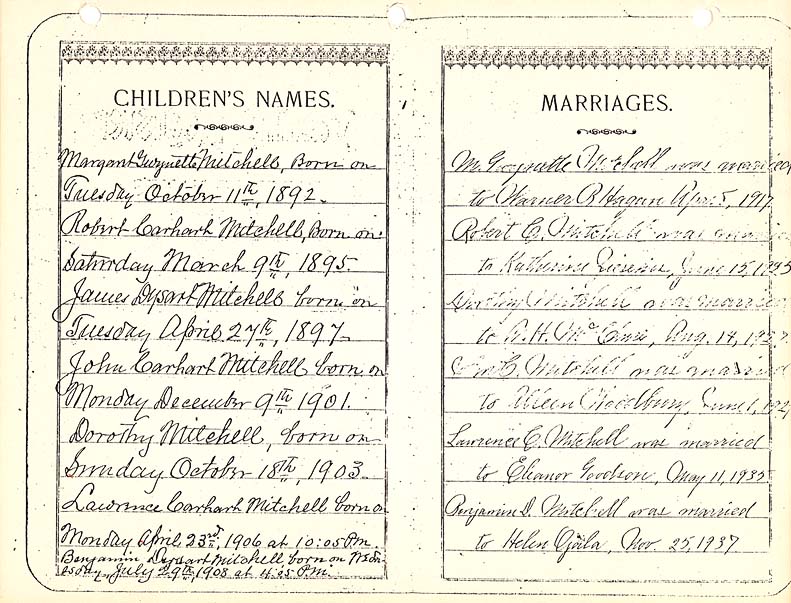
Mitchell Bible Register Marriages
-
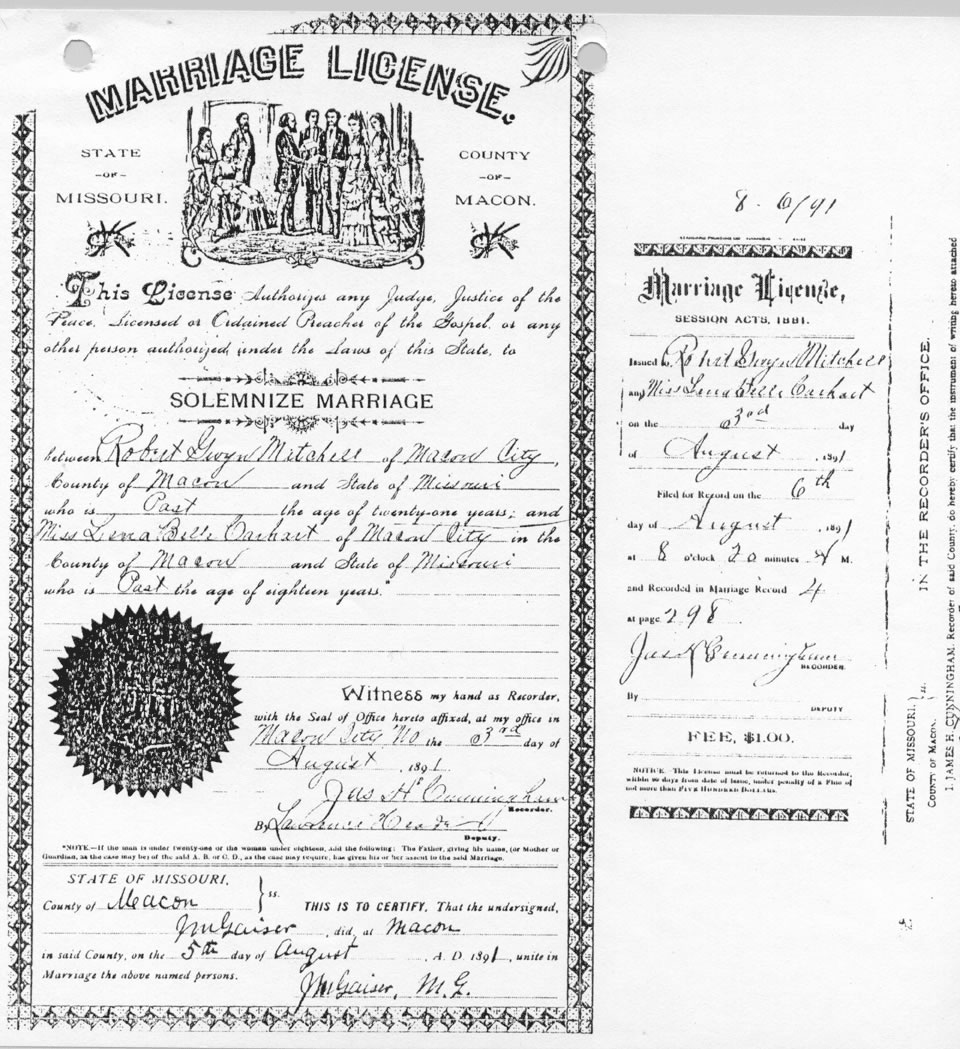
Marriage License of Robert Gwyn Mitchell and Lena Carhart
Marriage license of Robert Gwyn Mitchell and Lena Bell Carhart, 1891, in Macon Co., Missouri.
-

Robert Craig, Robert Craig Jr. and John Mitchell Given as Securities in Will of William King
“Be it remembered that at a Court opened and held by the justices of the Court of Pleas and Quarter Sessions for the County of Roane at the Courthouse in Kingston on the 3rd Monday of March 1809 The following Probate of the last Will and Testament of WILLIAM KING deceased with the attestation of…
-

Ebenezer Sparhawk Jr. and Azubah Jepherson
Ebenezer SPARHAWK Jr., son of Rev. Ebenezer SPARKHAWK Sr. and Abigail STEARNS, was born 29 May 1764 in Templeton, Worcestor Co. MA., and died 31 Oct. 1836 at Rochester, Windsor Co. VT. 23 June 1799, in Rochester, Windsor Co. VT., Ebenezer married Azubah JEPHERSON, daughter of Joseph JEPHERSON and Ruth EMERSON. Azubah was born 1779…
-

Obituary and Memorials for Mrs. Erasmus Darwin Pearson
Mrs Erasmus Darwin Pearson, the wife of Rev. Erasmus Darwin Pearson, was Orpha Matilda Dysart, daughter of John Dysart and Matilda Brooks and sister of Martha Cowden Dysart Mitchell (our line). They resiided in Pike county, Missouri. Thank you to Jim Mitchell for the photocopy of the published documents. The newspaper was not recorded. *…
-
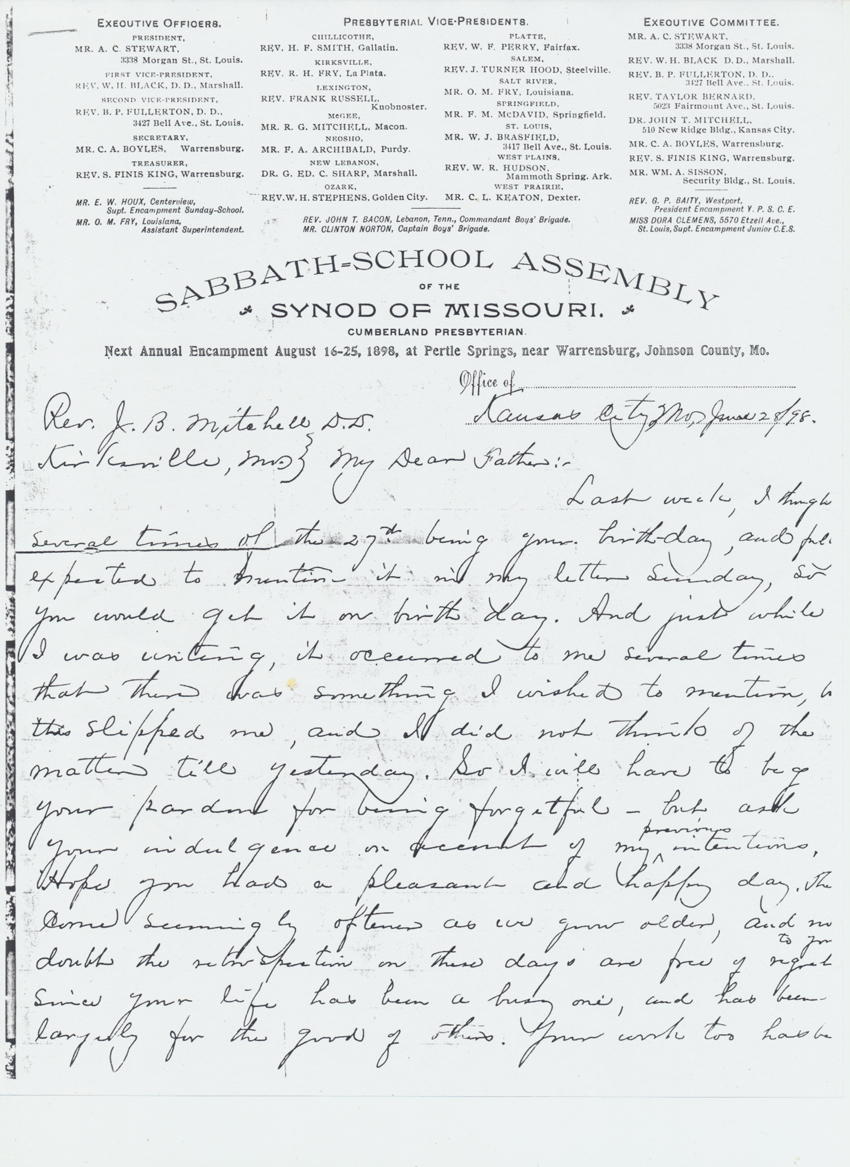
Letter from Robert Gwyn Mitchell to James Bourne Mitchell, June 28, 1898
Note: Robert Gwyn Mitchell, of our line, was a son of the Rev. James Bourne Mitchell, born June 27 1821 in Abingdon, Virginia, died March 12 1901 at Kirksville, Missouri. Robert mentions in the letter his brother Orlando “Lando” McDavid Mitchell and his wife Clara Wilson and their two children Horace Wilson and Martha. Thank…
-

Obituary of Capt. Robert Craig, February 8, 1834, Abingdon
Capt. ROBERT CRAIG departed this life in this County on the morning of the 4th last in the 90th year of his age. The deceased had resided in this county about 46 years; whither he removed about the year ’87, from the state of Pennsylvania. In the various spheres in which he was called to…
-
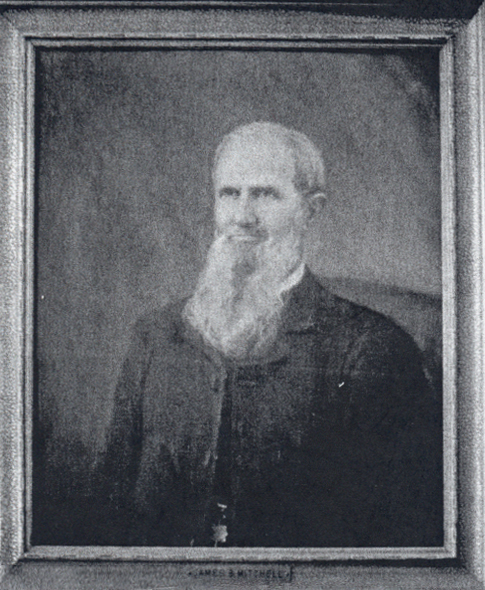
J. B. Mitchell is Honored on Founders Day (Nov 26, 1931 news article on Missouri Valley College)
Thanks to Jim Mitchell for the scan of the news articles and the image of James Bourne Mitchell’s portrait. Below is my transcription. J. B. Mitchell is Honored on Founders Day M. V. C. Conducts an Impressive Program Yesterday Founders Day at Missouri Valley College was observed yesterday, beginning in the morning at Stewart Chapel…
-
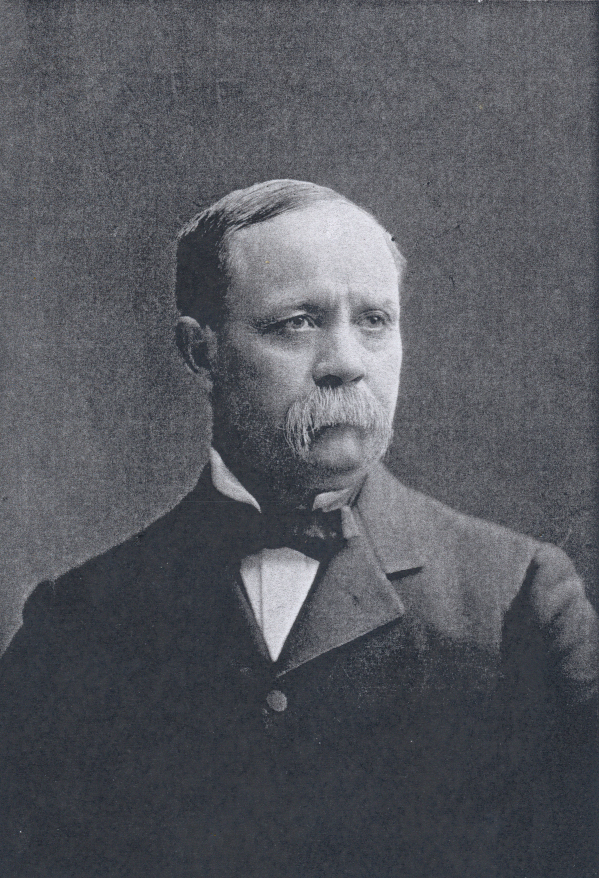
Photo of Dr. John Mitchell, son of James Bourne Mitchell
Original photo courtesy of Jim Mitchell. Dr. John Thompson Mitchell, born Oct 12, 1847 in Missouri, died Nov 4, 1912, settled in Kansas City. He was the eldest son of Rev. James Bourne Mitchell and Martha Cowden Dysart. From the 1880 census: 1880 MO, JACKSON CO., KANSAS CITY 5th WARD MITCHELL John T. 32 b.…
-
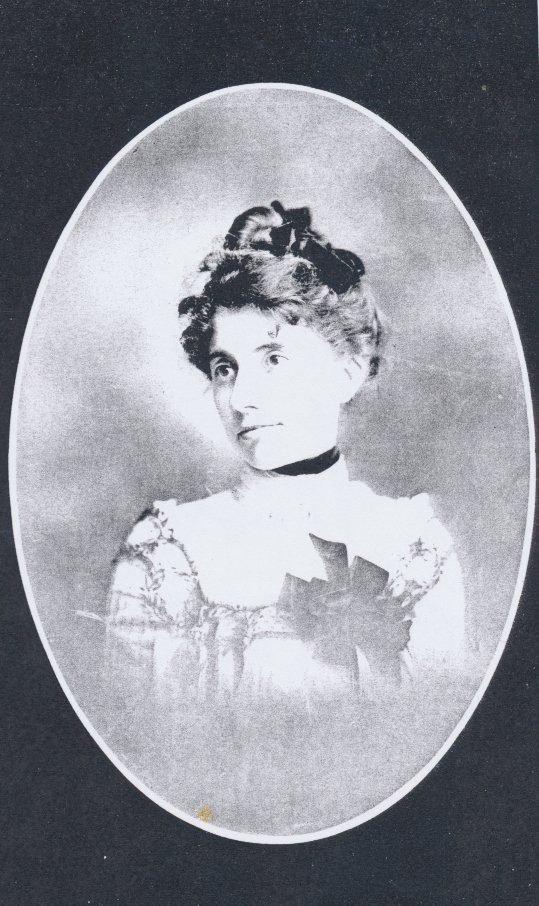
Photos of Orlando Mitchell, son of James Bourne, and wife, Clara
Original photos are courtesy of Jim Mitchell, a descendant. Orlando McDavid “Lando” Mitchell, born May 5, 1865 in Randolph County, Missouri, died October 27, 1949 in Kansas City, Jackson, Missouri, was a son of Rev. James Bourne Mitchell and Martha Cowden Dysart. On Nov 20 1890 he married Clara Wilson, born Nov 25, 1864 in…